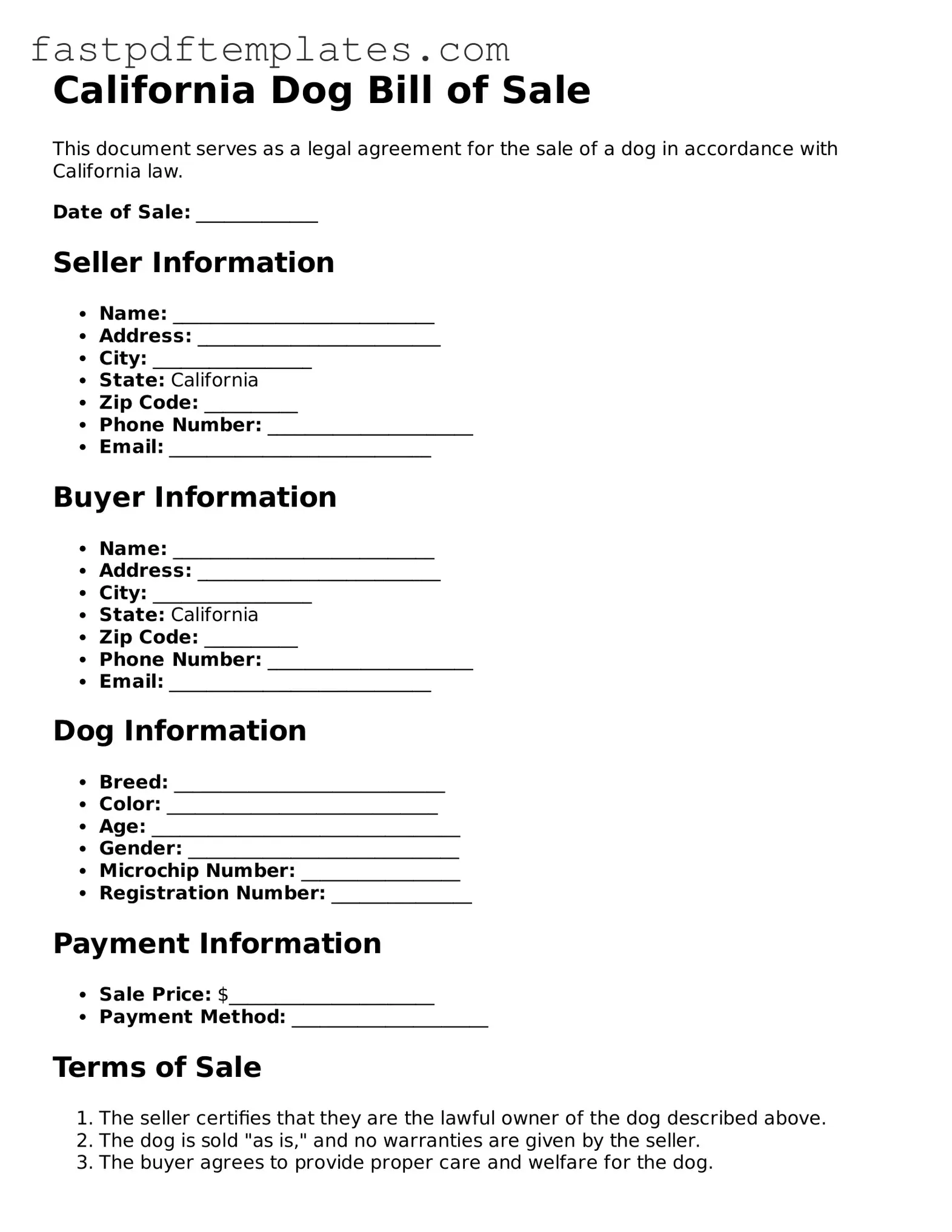The California Dog Bill of Sale form shares similarities with a general Bill of Sale. Both documents serve as proof of transfer of ownership for an item, whether it be a pet or personal property. They typically include details such as the buyer and seller's information, a description of the item, and the sale price. In both cases, the document acts as a legal record to protect the interests of both parties involved in the transaction.
Another document similar to the Dog Bill of Sale is the Pet Adoption Agreement. This agreement is often used by animal shelters and rescue organizations to formalize the adoption of a pet. Like the Dog Bill of Sale, it outlines the responsibilities of the new owner and may include terms regarding the care and treatment of the animal. Both documents emphasize the importance of responsible pet ownership and ensure that the animal is going to a suitable home.
The Dog Bill of Sale also resembles a Vehicle Bill of Sale. Both documents provide a written record of a transaction and include essential details such as the buyer and seller’s names, the item’s description, and the sale price. While one pertains to pets and the other to vehicles, both serve to protect the interests of the parties involved and can be used for registration or ownership verification purposes.
In addition, the Dog Bill of Sale is akin to a Lease Agreement for pets. A Lease Agreement outlines the terms under which a pet can be temporarily cared for or housed. Similar to the Dog Bill of Sale, it includes details about the animal, the parties involved, and specific terms regarding care. While the Bill of Sale transfers ownership, the Lease Agreement specifies the conditions under which the pet is kept, highlighting the responsibilities of the caretaker.
The Adoption Contract is another document that parallels the Dog Bill of Sale. This contract is often used when adopting pets from shelters and includes stipulations about the care and treatment of the animal. Both documents require the buyer or adopter to acknowledge their responsibilities, ensuring that the animal will be well cared for. They serve to formalize the relationship between the new owner and the pet.
The Dog Bill of Sale can also be compared to a Gift Agreement for pets. This document is used when a pet is given as a gift rather than sold. Similar to the Dog Bill of Sale, it includes information about the giver and receiver, as well as details about the animal. Both documents help clarify the transfer of ownership, even when no money is exchanged, ensuring that the new owner is aware of their responsibilities.
Finally, the Dog Bill of Sale is similar to a Breeder's Sales Contract. This contract is used when purchasing a dog from a breeder and typically includes specific terms regarding the sale, health guarantees, and breeding rights. Both documents aim to protect the rights of the buyer and seller while ensuring that the animal is placed in a responsible home. They provide a framework for the transaction, outlining the expectations for both parties.
